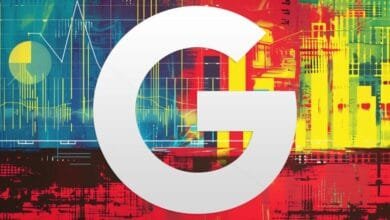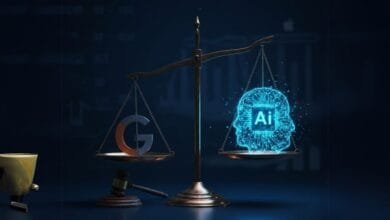Google Cloud Next ’25 Keynote: Forget Hype, They Brought the Exaflops (and AI That Thinks!)

▼ Summary
– Google announced a $75 billion investment in infrastructure for AI and Cloud by 2025, emphasizing their commitment to advanced technology.
– The 7th generation Tensor Processing Unit, Ironwood, offers a 3600x performance gain over the first TPU and 42.5 exaflops of compute per pod.
– The Gemini 2.5 Pro AI model, with advanced reasoning capabilities, achieved top scores on benchmarks and is already being adopted by companies like Box and Palo Alto Networks.
– Google introduced a comprehensive suite for creative AI, including Veo 2 for AI filmmaking, Imagen 3 for detailed images, Chirp 3 for custom voices, and Lyria for music generation.
– Google emphasized partnerships and openness, highlighting deep ties with NVIDIA and a commitment to interoperability with existing systems and models.
LAS VEGAS – Alright DigitrendZ readers, your intrepid tech reporter reporting live (well, almost!) from the aftermath of the Google Cloud Next ’25 opening keynote! Thomas Kurian and Sundar Pichai didn’t just paint a picture of the future; they rolled out the blueprints, the silicon, and a whole lot of AI firepower to prove they’re building it now. Forget the usual buzzwords – this 1 hour and 40-minute session was packed with tangible tech and serious ambition. Let’s explore the real substance.
Laying the Foundation: Exaflops, Global Networks, and a $75 Billion Bet
You can’t build the next generation of AI on flimsy foundations. Google made it clear they’re going all-in on the underlying infrastructure:
- The $75 Billion Statement: Pichai dropped a massive number: a planned $75 billion in total capital expenditure for 2025, laser-focused on the servers and data centers needed for their AI and Cloud ambitions. That’s not pocket change; it’s a full-throated commitment.
- Ironwood TPUs Unleashed: Meet the 7th generation Tensor Processing Unit, Ironwood. Pichai boasted a 3600x performance gain over their first public TPU. How fast is it? Amin Vahdat broke it down: a single Ironwood pod delivers 42.5 exaflops of compute – dwarfing the world’s current #1 public supercomputer by over 24 times per pod. Plus, they’ve achieved a 29x improvement in energy efficiency along the way.
- Cloud WAN Goes Global: Google’s planet-scale private network is now open for business as Cloud WAN. They’re promising over 40% faster performance and up to 40% lower total cost of ownership, already leveraged by giants like Citadel Securities and Nestle.
- Storage Gets Seriously Speedy: New innovations aim to crush data bottlenecks. Rapid Storage offers 5x lower latency for certain workloads, while Anywhere Cache can cut storage latency by up to 70%. They also detailed the AI Hypercomputer system and enhanced GKE features cutting inference costs and latency.
The Gemini Leap: AI That Actually “Thinks”
The star of the show, the Gemini family of AI models, showed significant evolution beyond just better benchmarks:
- Gemini 2.5 Pro – Reasoning Power: Pichai emphasized its new “Thinking” capability, allowing it to “reason through its thoughts before responding”. It’s not just clever marketing – it snagged the #1 spot on the ChatbotArena leaderboard and achieved the highest score ever on Humanity’s Last Exam, a benchmark designed to push the limits of knowledge and reasoning. Demos showed it simulating physics and generating interactive code.
- Gemini 2.5 Flash – Tunable Intelligence: Coming soon, this model offers speed and cost-efficiency but adds a crucial knob: users can control how much the model reasons, balancing performance and budget. Practicality matters.
- Real-World Adoption: Kurian highlighted that companies like Box and Palo Alto Networks are already building new applications using Gemini 2.5, demonstrating immediate enterprise uptake.
Unleashing Creativity: A Full Media Generation Suite
Google is pushing hard beyond text generation, rolling out tools for nearly every creative modality:
- Veo 2 – Your AI Film Crew: This isn’t just text-to-video; it’s AI filmmaking. Veo 2 generates minutes of 4K video with specific director tools like camera presets (think drone shots!), first/last shot control, and dynamic inpainting/outpainting for editing within the video. The live demo seamlessly removing a crew member was impressive. Responsible creation is key, with SynthID watermarking built-in.
- Imagen 3, Chirp 3, Lyria: Google now boasts the only suite (they claim) covering all major generative modalities under one roof: Imagen 3 for highly detailed, prompt-accurate images; Chirp 3 for creating custom voices from just 10 seconds of audio; and Lyria, turning text prompts into 30-second music clips.
AI Agents & Workspace Get Specific and Practical
The vision of AI assistants got much more concrete, focusing on specific tasks and workflows:
- Specialized Agents Emerge: Moving beyond general AI, Google introduced purpose-built Agents via Vertex AI: Customer Agents for smarter engagement, Data Agents for managing and activating insights, Code Agents (like Gemini Code Assist) to help developers, and Security Agents to proactively analyze threats.
- Workspace Gets Smarter Tools: New features aim to automate tedious tasks: “Help Me analyze” in Sheets guides data exploration, “Audio overviews” creates spoken summaries of Docs, and “Workspace Flows” automates multi-step processes.
- McDonald’s tangible AI: CEO Chris Kempczinski provided specific examples: Google Distributed Cloud enabling an AI assistant for shift leaders spotting issues, predictive maintenance alerts from fryers, and centralizing real-time data with Gemini on Vertex AI. It’s AI solving real-world operational challenges.
- Unified Security: Google Unified Security (Gus) was showcased as a central platform for managing security, integrating these new agent capabilities.
Partnerships and Openness: Playing Well With Others
Google emphasized collaboration and ensuring its tools fit into existing ecosystems:
- Deep NVIDIA Ties: NVIDIA CEO Jensen Huang appeared on screen, underscoring the partnership across “every single layer”. He specifically highlighted bringing secure AI via Google Distributed Cloud + NVIDIA to regulated industries that need data to stay local. Google Cloud also confirmed early access to NVIDIA’s Blackwell and future Vera Rubin GPUs.
- Interoperability is Key: Kurian repeatedly stressed Google Cloud’s commitment to openness, allowing customers to connect AI tools with their existing systems, databases, and even models from other providers.
The Takeaway: Beyond “Why Not?” to “Here’s How”
The opening keynote wasn’t just about dreaming big; it was about delivering the tools and the raw power to make those dreams concrete. Google laid out a remarkably comprehensive vision, backed by staggering investment, bleeding-edge hardware, increasingly sophisticated (and practical) AI models, and a clear focus on enabling customers and partners. The message wasn’t just “Imagine what’s possible,” it was “Here’s the toolkit, let’s build it.”






